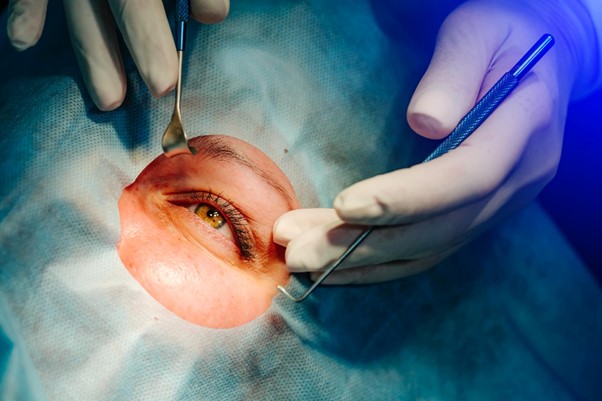Introduction
Corneal collagen crosslinking is a medical procedure that helps strengthen the cornea. The cornea is the clear front part of your eye. This treatment is important for people with weak or thinning corneas. Often, doctors use it to treat keratoconus, a condition where the cornea becomes thin and bulges outward. Because this procedure can stop the cornea from getting worse, it helps protect your vision. Many people now choose corneal collagen crosslinking as a safe and effective way to manage corneal problems.
Symptoms and Conditions Treated
Corneal collagen crosslinking is mainly used for keratoconus. In this condition, the cornea becomes cone-shaped and vision gets blurry. However, it can also help with other corneal issues. You might need this treatment if you notice:Blurry or distorted visionFrequent changes in glasses prescriptionIncreased sensitivity to lightDifficulty seeing at nightDouble vision in one eye
Sometimes, doctors use crosslinking for other corneal thinning problems. Early treatment can help prevent vision loss.
Causes and Risk Factors
Keratoconus and other corneal thinning issues can happen for many reasons. For example, some people inherit these problems from their family. Others may develop them due to frequent eye rubbing or allergies. In addition, certain medical conditions can raise your risk. While anyone can get keratoconus, it often starts in teens or young adults. Knowing your risk factors can help you seek care early.
Diagnosis and Eligibility for the Procedure
Doctors use special tests to check your cornea. These tests measure the shape and thickness of your cornea. If you have signs of keratoconus or other thinning, your doctor may suggest corneal collagen crosslinking. However, not everyone is eligible. For example, if your cornea is too thin or you have an eye infection, you may need other treatments first. Always talk to an eye specialist to see if this procedure is right for you.
How Corneal Collagen Crosslinking Works
Corneal collagen crosslinking is a simple, outpatient procedure. First, your doctor numbs your eye with drops. Next, they apply vitamin B2 (riboflavin) drops to your cornea. Then, they shine a special UV light on your eye. This light helps the riboflavin strengthen the cornea by creating new bonds between collagen fibers. The whole process usually takes about an hour. Most people go home the same day.
Benefits and Effectiveness
Corneal collagen crosslinking offers many benefits. For instance, it can:Slow or stop the progression of keratoconusHelp maintain your current visionReduce the need for a corneal transplantImprove corneal strength and stability
According to studies published in peer-reviewed journals, most patients see stable or improved vision after the procedure. The World Health Organization and leading eye care groups support its use for keratoconus.
Risks and Possible Side Effects
Like any medical procedure, corneal collagen crosslinking has some risks. However, most side effects are mild and temporary. You may experience:Eye discomfort or pain for a few daysTemporary blurry visionLight sensitivityEye redness or swelling
Serious problems, such as infection or scarring, are rare. Still, you should contact your doctor if you notice severe pain or vision changes.
Recovery and Aftercare
After corneal collagen crosslinking, you will need to rest your eyes. Your doctor may give you eye drops to prevent infection and reduce swelling. For a few days, you might need to wear a protective contact lens. Most people return to normal activities within a week. However, you should avoid rubbing your eyes and follow your doctor’s instructions closely. Regular check-ups help ensure your cornea heals well.
Prevention and Lifestyle Tips
While you cannot always prevent keratoconus, you can protect your eyes by:Avoiding eye rubbingManaging allergies with your doctor’s helpWearing sunglasses outdoorsGetting regular eye exams, especially if you have a family history
Early detection and care can make a big difference in your eye health.
Frequently Asked Questions (FAQ)
Is corneal collagen crosslinking painful? Most people feel mild discomfort, but the procedure is not usually painful.How long does recovery take? Most people recover in about one week, but vision may improve slowly over months.Can I have both eyes treated at once? Usually, doctors treat one eye at a time for safety.Will I still need glasses or contacts? You may still need them, but crosslinking can help prevent your vision from getting worse.Is the procedure safe? Yes, it is considered safe and effective when done by a trained eye specialist.
Conclusion
Corneal collagen crosslinking is a proven way to treat keratoconus and other corneal thinning problems. Because it can help protect your vision, many people benefit from this safe and effective procedure. If you have symptoms or risk factors, consult an eye specialist for personalized advice on corneal collagen crosslinking.


